
Biggest Animals on Earth
Table of Contents
Learn about the Biggest Animals on Earth
What do you know about the biggest animals on earth? Do you know who animals are and what types of animals they are? Animals are classified into vertebrates and invertebrates. Vertebrates are animals that have a skeleton and backbone, while invertebrates are animals that do not have a backbone such as insects, spiders, crabs, corals, and worms. Vertebrates are classified into five groups: amphibians, birds, reptiles, mammals, and fish. Amphibians are cold-blooded and have moist and smooth skin. Birds have feathers and wings, and lay eggs in nests. Reptiles are cold-blooded like amphibians but they have scales. Mammals are warm-blooded and they have hair. Fish have a backbone, they live underwater and breathe oxygen in their gills.
Do you know what the biggest animals in the world are? Did you know that not all of the biggest animals in the world are living on the land? Do you know where the biggest animals live? You will find all of these answers in this article. The biggest animals in the world aren’t land animals because of their enormous size, they can struggle because of their size. The biggest animal ever lives in the sea. Let’s know what are the biggest animals in the world.
The Blue Whale “Balaenoptera Musculus”
Blue Whales are considered the biggest animal on Earth and are bigger than dinosaurs. They are also known as Balaenoptera musculus. Blue whales are baleen whales and marine mammals, which can live between 80 and 90 years in the wild. They are carnivorous animals that feed on other animals. You can find them in all major oceans except the Arctic Ocean.
The blue whale has a long and slender body, a wide head, huge flippers, a sturdy tail, and a small dorsal fin. It reaches a length of 98 feet “29.9 meters”, and weighs between 196 long tons and 219 short tons. The blue whale’s body has various shades of greyish-blue on its back and seems lighter underneath. A male blue whale is called a bull, a female blue whale is called a cow, and a young blue whale is called a calf. There are about five currently recognized subspecies of blue whales.
Facts about Blue Whale
- Blue Whale’s tongue weighs as much as an elephant.
- Blue Whale’s heart is too big, it may seem like the size of a car.
- Blue Whale’s blood vessels are so vast, that you can swim through them!!!!
- Some Blue whales have a yellowy-coloured underside, which results in the nickname “sulphur bottom” whales.
- Blue whales may swim alone or in groups of two to four.
- You can find groups of blue whales together in areas where there’s lots of food obtainable.
- Blue Whales are not only the biggest animals in the wild, but they are also the loudest vocal sound of all. They communicate with each other by making a series of super-loud vocal sounds.
- Although blue whales are huge, they eat tiny shrimp-like crustaceans called krill. Blue Whales have baleen instead of teeth, it is a fibrous material used to filter what they have eaten. During eating, the whale lets a big amount of water and krill inside its mouth. The blue whale after that pushes the water through its baleen plates, which trap the krill to be swallowed fast.
- At birth, baby blue whales weigh about 4,000kg and measure about 8 meters long. They grow quickly, suckle on their mother’s fatty milk, and gain about 90 kg each day.
- As the reason for being heavily hunted in the late 19th and early 20th centuries, their population has declined by 70-90 per cent in the past 150 years. There are about 10,000-25,000 left in the wild, so these kinds of whales are today classified as an endangered species.
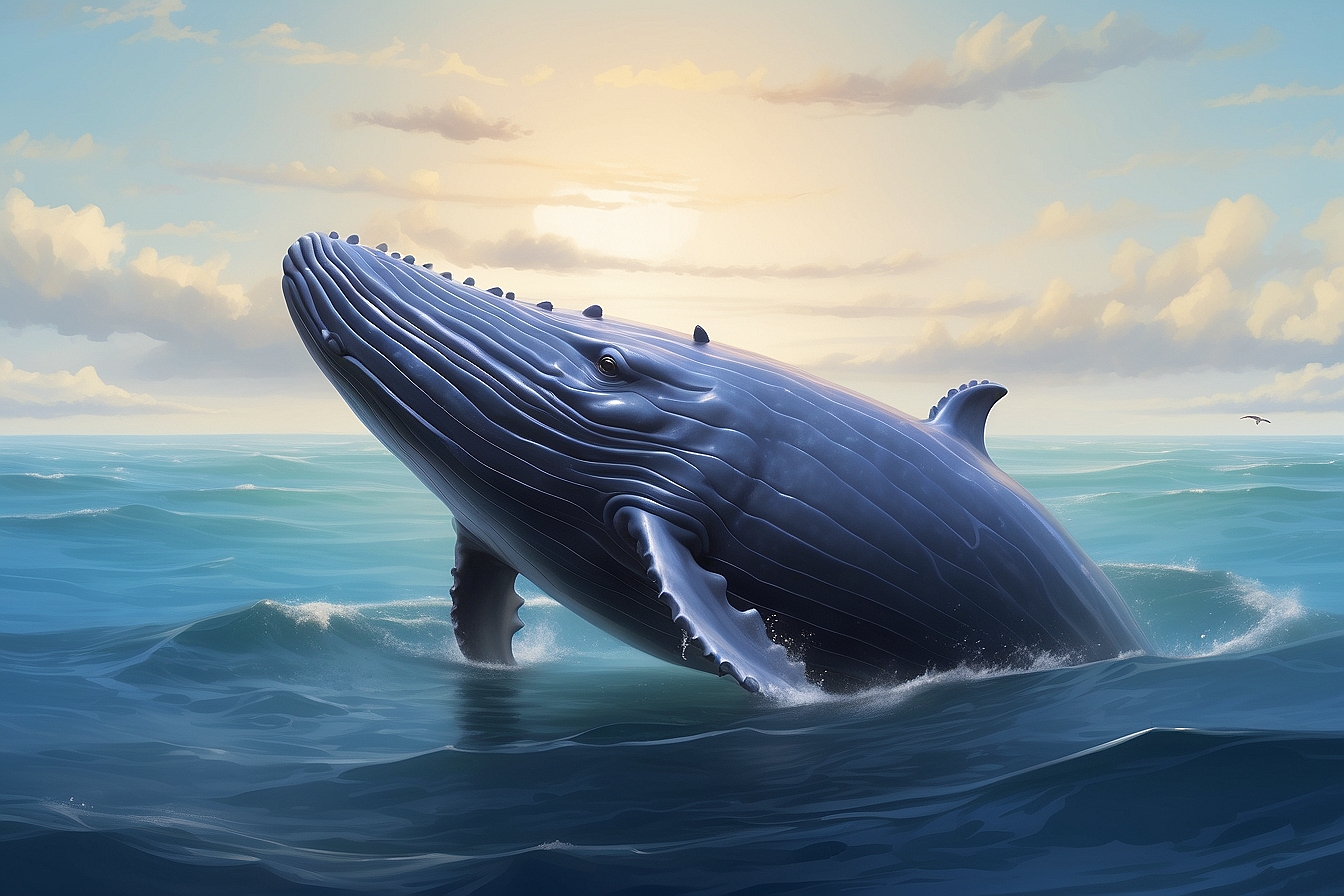
Ostrich “Struthio camelus”
Ostrich is considered the largest bird on Earth, but it can not fly because it is too big and heavy. It is also known as Struthio camelus, which is native to Africa. They are found only in open countries in Africa, they circle African savanna and desert lands. This bird can run at speeds of up to 70 km/h over long distances. Also, their powerful legs are considered defensive weapons that help them to pack a powerful kick on would-be predators.
Males are taller and heavier than females, they can weigh up to156.8 kilograms (346 pounds) and can be over 2.8 meters (9 feet tall). Meanwhile, females can weigh up to 109.7 (242 pounds) and can be over 2 meters (6 feet tall). It can live between 30 to 40 years. They are omnivores.
Facts about Ostrich
- They can survive without water for days by generating water internally, they extract water from vegetation.
- Get most of their water from the plants they eat.
- Ostrich kicks can kill a human or a predator like a tiger. Each two-toed foot has a long, sharp claw.
- Ostriches live in small groups, and ostrich males dominate these groups. Males mate with the group’s dominant hen and also sometimes mate with others in the group. All of the group’s hens lay their eggs in the dominant hen’s nest. Both males and females take turns incubating the enormous eggs and caring for their chicks.
- Ostriches’ eggs are considered the largest of any living bird, but they are more oval than others eggs. But n living animals, dinosaurs produce larger eggs. Each one of these eggs weighs as much as two dozen chicken eggs. It may weigh 1522 g, measuring 6 inches in length and measuring 5 inches across.
- Ostrich hens can lay one or two eggs a week during their breeding season.
- After egg hatching, the chicks are about the size of chickens. Chicks leave the nest with their parents a few days after hatching. Approximately by six months, they may become the size of their parents. Around three or four years old, ostriches reach sexual maturity and can mate.
- Ostriches not only primarily eat plants, seeds, and roots but also eat lizards, insects, snakes, lizards, rodents or other creatures available in their habitat.
- Ostriches are unable to build nests in trees like other birds, so they dig holes in the ground to lay their eggs. Ostriches regularly rotate the eggs, to make sure that the eggs are evenly heated by sticking their heads into the nest.
- Ostriches have a long neck that helps them to see well for long distances and keep an eye out for predators.
- Ostriches’ eyes are five times bigger than other land animals and also bigger than the human eye. Ostriches’ eyes is measuring 5 centimetres in diameter from front to back. They have prominent eyes and sweeping eyelashes.
- Ostriches also swallow sand, and small stones, which help smash food in the gizzard.
- The male is mostly black but has white plumes in the wings and tail, on the other hand, females are mostly brown. The head and most of the neck, reddish to bluish, are lightly downed; the legs, including the powerful thighs, are bare.
- Ostriches have special feathers that are loose, soft, and smooth.
- Adult male ostriches’ feathers are mostly black but have white plumes in the wings and tail, while adult females have brownish-grey feathers.
- Ostriches are hunted for several reasons such as feathers, skin, meat, eggs, and fat.
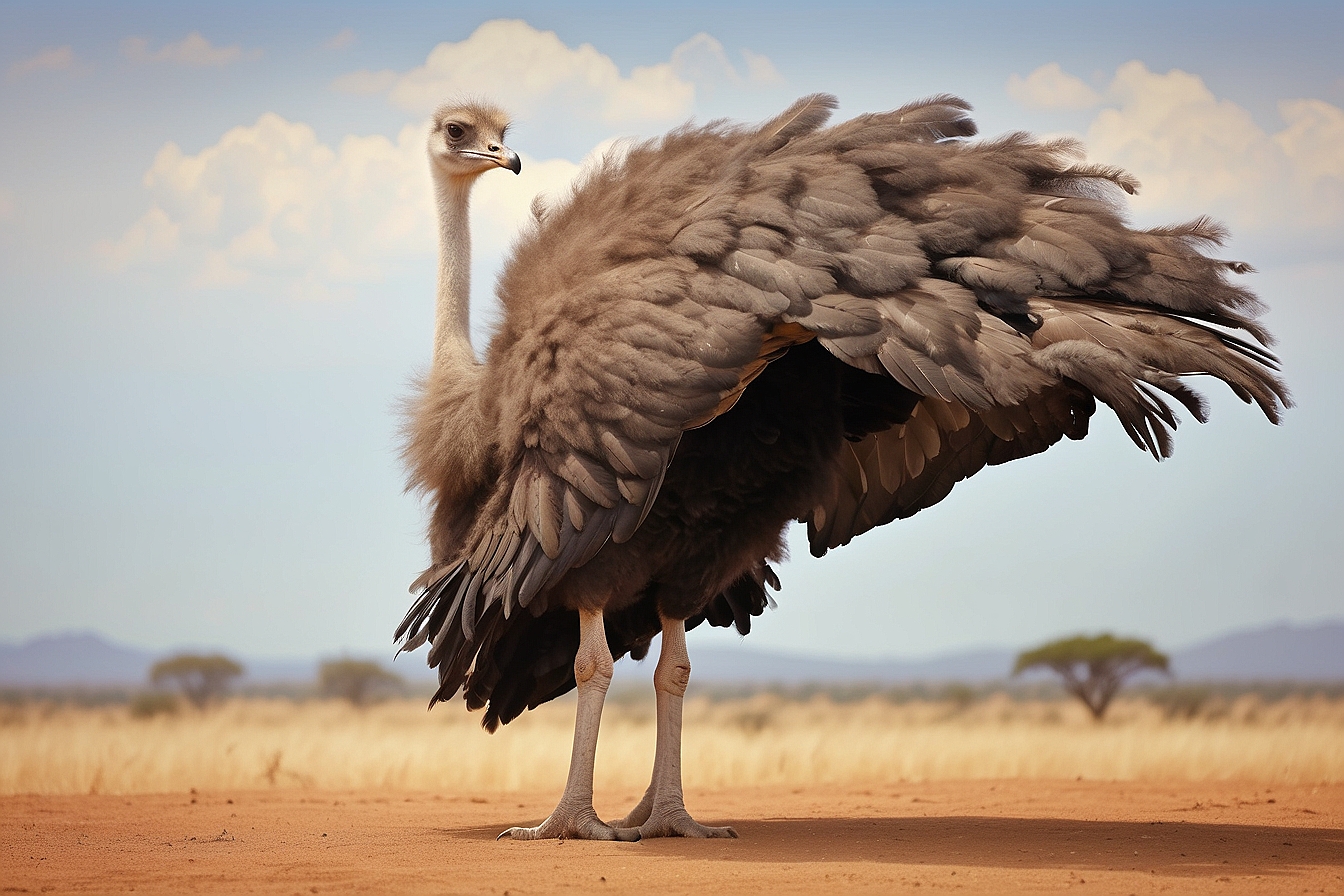
Saltwater Crocodile “Crocodylus porosus”
The Saltwater Crocodile is considered the largest and scariest living reptile. They are also known as Crocodylus porosus. They weigh up to 1,000 pounds and can grow to over 7 meters in length. You can find these prehistoric crocodiles around salt and brackish waters in parts of eastern India, Southeast Asia, and northern Australia.
However, the Saltwater Crocodiles are excellent swimmers, they also have often been spotted far out at sea. The Saltwater Crocodiles are carnivores, they feed on anything they can get their jaws on such as monkeys, water buffalos, wild boars, and sharks. They explode from the water without any warning, they hit the victim with their powerful tails, after that they gasp, drag it back in, and hold it under until the animal drowns.
Facts about Saltwater Crocodile
- Saltwater Crocodiles can live up to 70 years old.
- Saltwater Crocodiles are considered the largest living reptile in the world and the biggest crocodile species in the world.
- Saltwater Crocodiles males are bigger than females, with a weight of 1,000 kg ( 2,205 pounds), and a length of 7 meters (23 feet) long, while females weigh about 150 kg (330 pounds), and length of 3 meters (10 feet) long.
- Adult saltwater crocodiles have the greatest bite pressure of any animal in the world, they have 66 teeth!!!!!
- Saltwater crocodiles communicate by using different sounds, including hissing, barking, chirping, and growling.
- Like other animals, Saltwater Crocodiles come ashore to warm up in the sun and to nest.
- Saltwater Crocodile females lay a clutch of approximately 50 eggs, They look over their nests to protect their eggs from predators.
- The sex of the Saltwater Crocodile is determined by temperature!!!!!!! Yeah… warmer nests produce mostly males, while cooler nests produce mostly females.
- Saltwater crocodiles have been widely hunted by people for many reasons including their eggs and meat and skin. Their skin is used as a material for shoes, bags, and other goods.
Chinese giant salamander “Andrias davidianus”
The Chinese giant salamander is considered to be the largest amphibian in the world. It is also a species of salamander, which is also known as Andrias davidianus. They are found around mountain streams and massive lakes in central, southwestern, and southern China.
According to research, Chinese giant salamander populations are less than 50000, and they are critically endangered so the numbers have reduced a lot due to habitat destruction, human over-consumption, and water pollution.
These odd-looking creatures are so big, that they are up to 180 centimetres long, and weigh in at 70 kilograms. They are carnivores, they feed on insects, freshwater crabs, earthworms, lizards,
and shrimps.
Their bodies are rough and porous, with a long, thick body, four stubby limbs, and a blunt head with tiny eyes. Chinese giant salamander’s eyes have no lids behind their nostrils and they have very poor eyesight. They also have a long tail that may make up over half of their body length. Their body colour is mottled from brown to dark red to white and orange.
Facts about Chinese giant salamander
- The Chinese giant salamander has an ancient genetic lineage of almost 170 million years.
- The Chinese giant salamander lives its entire life underwater, it absorbs oxygen through its skin because it has no gills like other sea creatures.
- The Chinese giant salamander females lay up to 500 eggs at breeding time. The eggs hatch after 50-60 days. The male is considered the safeguard and they care for the eggs after fertilization. The larvae develop in streams after about 30 days and begin to eat small insects, fish, and worms.
- Chinese giant salamanders are considered luxury food items in China.
- Chinese giant salamanders’ body contains acidic skin latex that holds a great medicinal value.
- Chinese giant salamanders like to be left alone and hidden, they are solitary creatures.
- Chinese giant salamanders can live up to 60 years or more.
- From August to September is the breeding season for these creatures.
- Chinese giant salamander size may be as humans’ size.
- Chinese giant salamander babies attain maturity at the age of five or six.
- Chinese giant salamanders have sensory nodes that extend along the sides of the body from head to tail, which allows them to track prey. To detect their prey they sense the vibrations in the water.
- Chinese giant salamanders are mostly active at night, they spend the day hidden in underwater caverns.
- Chinese giant salamanders’ bodies excrete the type of sticky fluid from their skin that is poisonous to their prey.
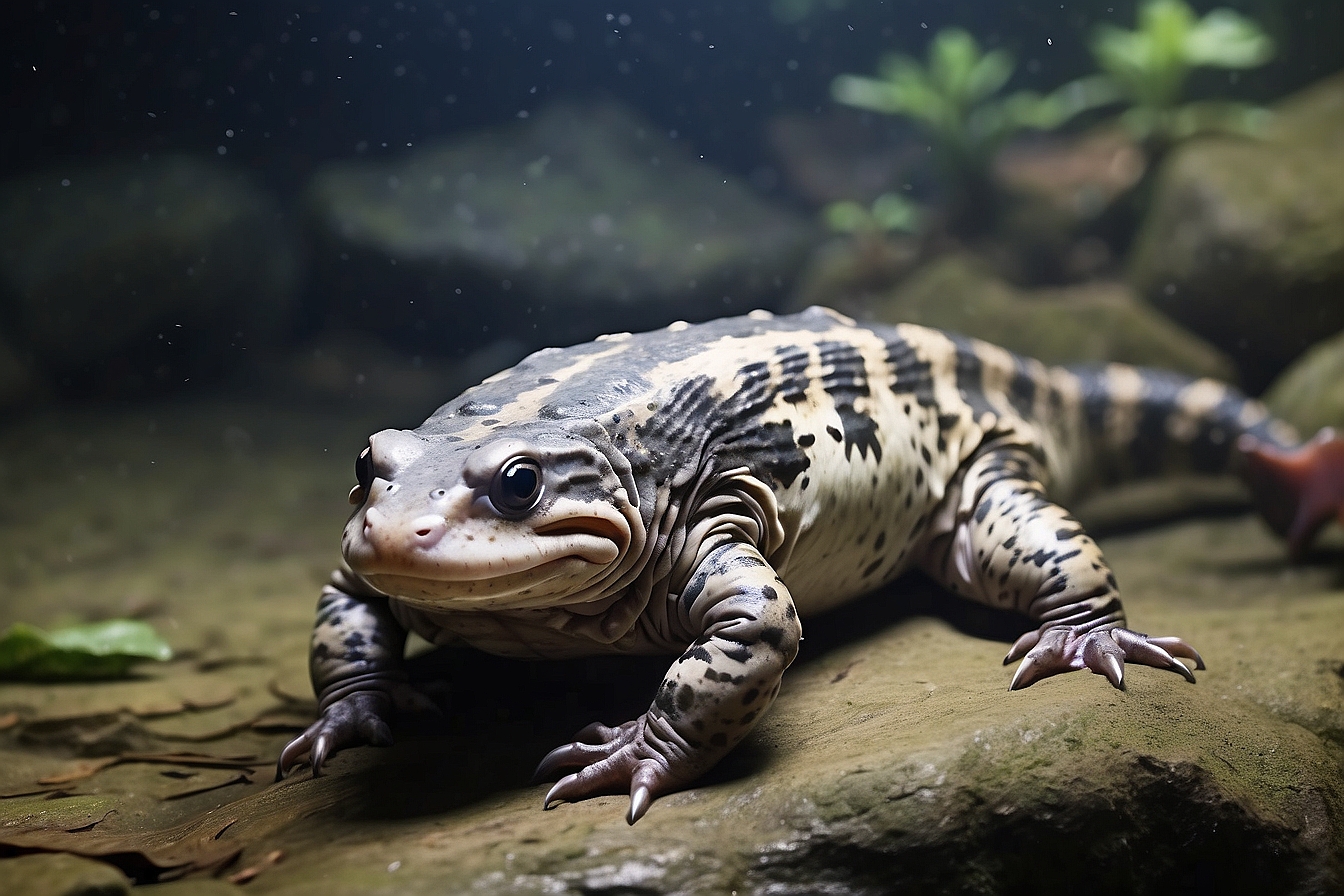
Capybara “Hydrochoerus hydrochaeris”
Do you know who are rodents? Rodents are mammals with long and sharp front teeth, which are used for gnawing. The capybara is considered the world’s biggest rodent but the capibara has no tail like other rodents. They are also known as Hydrochoerus hydrochaeris. They are found in every country in South America apart from Chile. They are found in Central and South America, near swamps, marshes, rivers, lakes and streams. They also have even been spotted in Florida.
It may look so much like a giant guinea pig and is also known as Hydrochoerus hydrochaeris. The capybara may weigh up to 65 kg kilograms (143 pounds), stand around 61 centimetres high at the shoulders (2 feet tall) and 1.2 meters long (4.6 feet). They have big, barrel-shaped bodies with rather square heads. Their long, thick hair is varying shades of golden or reddish-brown.
They are herbivores that only eat plants such as grasses and water plants. They are semi-aquatic, they spend much of their time in or around the water. They have webbed feet with big claws that help them not only to swim but also to get around their favoured watery terrain, and walk on the slippery rainforest floor.
Facts about the Capybara
- The capybaras’ thick fur helps to dry their bodies quickly after they leave the water and also helps to retain heat.
- Capybaras are related to rodents that are mammals in the order Rodentia. There are around 40% of all mammals are rodents such as rats, hamsters, squirrels, and mice.
- Their pale brown fur provides camouflage in the murky water from any predator. When Capybaras sense a threat, they quickly dive into the water. They have many predators such as jaguars, pumas, ocelots, green anacondas, and harpy eagles.
- Capybaras like to eat their poop. It sounds gross, but it provides them with more protein and nutrients from their food.
- Capybaras are lazy animals especially when they are by the water. They communicate with clicking, purring, barking noises and whimpering.
- Capybaras’ sharp front teeth never stop growing.
- Capybaras are sociable animals that like to live in groups of 10-20.
- They may live for around 8-10 years in the wild.
- Guarani Indians call capybara “Master of the Grasses”.

The Green Anaconda “Eunectes murinus”
The Green Anaconda is considered the largest snake in the world. This huge snake is also known as Eunectes murinus, which means “good swimmer” in Latin. This is a semiaquatic snake found in tropical South America, mainly in the tropical rain forests of the Amazon and Orinoco basins around swamps, marshes, slow-moving streams, and rivers. It is a member of a family of snakes that is called constrictors.
This reptile weighs up to 250 kilograms (550 pounds), and some anacondas have been measured at up to 9 meters long (30 feet), which may be longer than a London double-decker bus. Female anacondas are slightly larger than males. Their long bodies give them a wide place to swallow all kinds of prey.
They are a carnivore, they feed on deer, fish, alligators, birds, and anything else they can swallow. The green Anaconda eyes and nasal openings are on top of their heads that help them to lay in wait for prey while remaining nearly completely submerged and they also help them to see and breathe while they are in the water. They may live up to 10 years in the wild.
Facts about the Green Anaconda
- Although the green anaconda is a member of a family of constrictors, they are not venomous snakes, which means they don”t kill prey by biting them and delivering the venom. They wrap around their prey’s body and squeeze it tightly until it stops breathing!!!
- They have stretchy ligaments that allow them to open their mouth wide enough to swallow prey such as rodents, caiman, wild pigs, large fish, birds, turtles, capybara, deer and so on! They can go weeks without food after a big meal.
- During pregnancy, the females produce eggs inside their bodies. These eggs develop for 8-12 weeks and then hatch inside their bodies. Female anacondas give birth to as many as 80 tiny snakes, each one 12-24 inches in length. They keep their babies safe until they became able to swim.
- Green anacondas babies are about 2 feet long when they are born.
- There are other kinds of anacondas but they are smaller in sizes such as dark-spotted anaconda, yellow anaconda and Bolivian varieties.
- Although They are so heavy and big on land, they stealthy and sleek in the water.
- The green anacondas have four rows of teeth on the upper part of their mouth. They have between 90-100 teeth, which is may vary from species to other species of anaconda.

Komodo Dragon “Varanus komodoensis”
The Komodo dragon is considered the largest and heaviest lizard on Earth. This kind of reptile is also known as Varanus komodoensis. Komodo dragons are found in a few Indonesian islands of the Lesser Sunda group, including the islands of Komodo, Rintja, Padar and Flores.
It is a dangerous animal, which grows up to 3 meters long and weighs about 91 kilograms. The Female Komodo dragons are smaller than the males. These lizards are a carnivore, they hunt many preys such as large water buffalo, pigs, carrion, small dragon, and deer.
Facts about Komodo Dragons
- Komodo dragons are not dragons, they are lizards.
- Komodo dragons may live up to 30 years in the wild.
- Komodo dragons can walk up to six miles per day, but they prefer to stay close to their home.
- Komodo dragons females lay about 30 eggs. After laying eggs, they bury them until they hatch eight months later.
- use their sharp claws, and serrated to eviscerate their prey. Their teeth may look like shark teeth. They can hunt anything and eat it such as deer, pig, carrion, and even large water buffalo.
- Komodo dragons have long, flat heads with rounded snouts, bowed legs, scaly skin, and muscular tails.
- Komodo dragons have venom glands that are loaded with toxins. When Komodo dragons catch prey and bite down with their serrated teeth, they cause huge gaping wounds, which help the venom to raches their bodies through it. These toxins cause lower blood pressure, and massive bleeding, prevent clotting and induce shock.
- Komodo dragons use their tongues instead of noses to smell which helps them detect their prey from miles away.
- They also have an impressive sense of hearing and sight.
- Komodo dragons’ tails play a large role in their length and power. Their tails are as long as the rest of their bodies and their tails are strong enough to take down a pig.
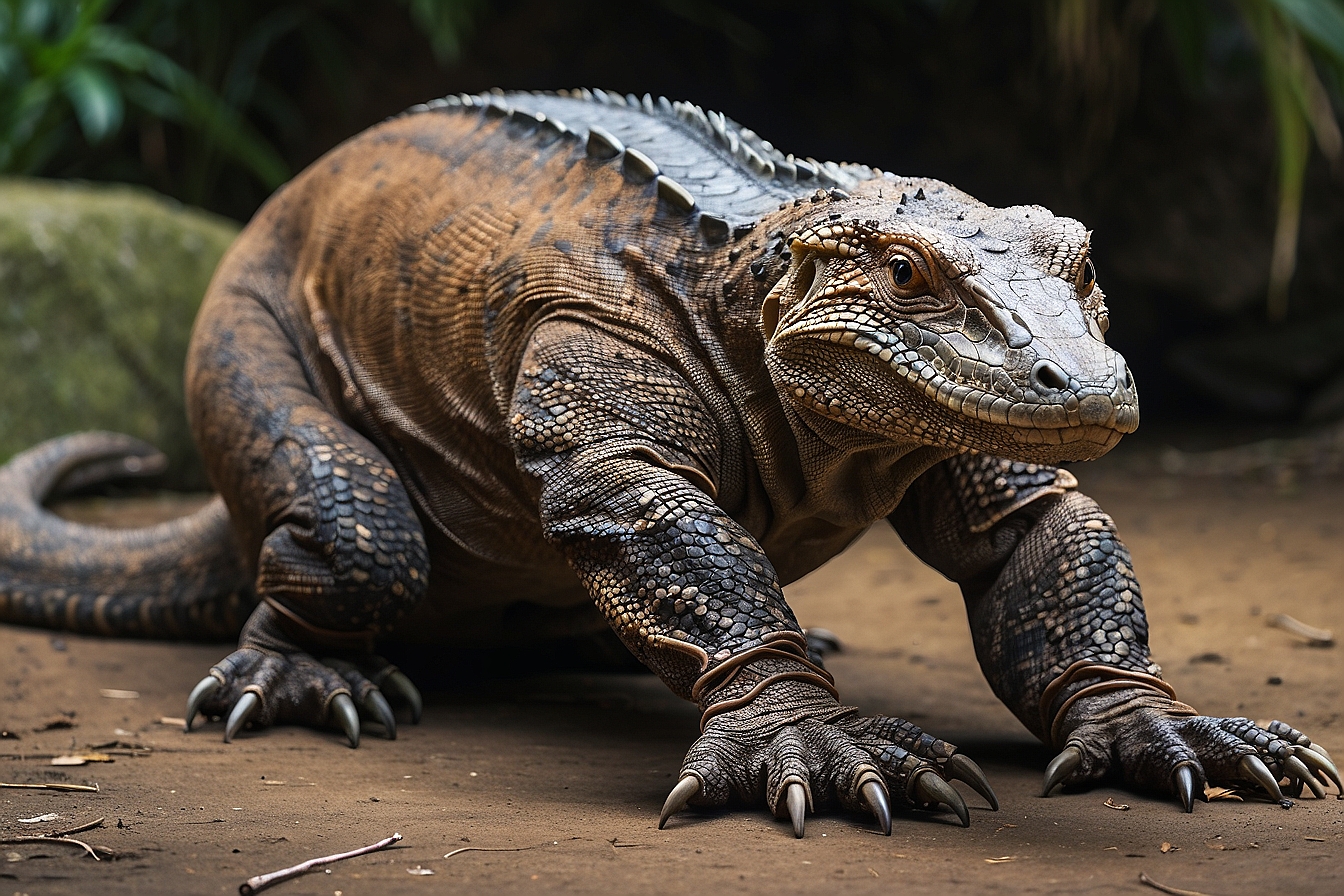
Japanese Spider Crab “Macrocheira kaempferi”
Do you know who are arthropods? Do you know who is the largest arthropod? Arthropods are invertebrate animals having an exoskeleton such as crabs, spiders, scorpions, and insects. Japanese Spider Crab is the largest arthropod, which is also known as Macrocheira kaempferi. The Japanese spider crab is also a species of marine crab, which is considered the only member of the genus Macrocheira.
This kind of marine crab is found around Japan, especially on the Pacific side of the Japanese islands, Honshu and Kyushu. They can also be found in the Sagami, Suruga, Tosa bays, and the coast of the Kii peninsula. The Japanese spider crab is an omnivore, it eats both animals, and plants, and may also eat dead animals. They scrape the ocean floor for plants and algae while others pry open the shells of molluscs.
The Japanese spider crab’s bodies are only 15 inches long. They have 8 legs and 2 arms that are used for feeding, each arm is 1.5 meters long. Their leg span reached up to 3.9 meters long and weighs up to 42 pounds. Like other species of crabs, they are orange in colour, with white spots on their legs, cream-coloured undersides and spiny, oval carapaces that blend in with the rocks on the ocean floor. They may live up to 100 years.
Facts about Japanese Spider Crab
- The arthropod family includes lobsters, crabs, spiders, scorpions, and insects.
- The Japanese spider crab has the largest leg span of any arthropod on Earth.
- The Japanese spider crab is a cute and gentle crab towards others, although it has some ferocious appearances.
- The Japanese spider crab has an armoured exoskeleton that helps protect it from larger predators such as octopuses. It can also use camouflage by blending into the rocky ocean floor or adorn its shell with sponges and other animals.
- The Japanese spider crab is found up to the depths of 750 meters.
- The Japanese spider crab female can lay up to 1.5 million eggs per season, and these eggs will hatch within 10 days.
- The Japanese spider crab newborns are small and have transparent bodies.
- Males are larger than females, they have larger chelipeds and legs that hold their claws, but females have wider bellies to hold their eggs.
- They never hunt, they almost search for plants or dead animals.
- In Japan, fishing for these kinds of crabs is prohibited during their breeding season to allow their numbers to increase.
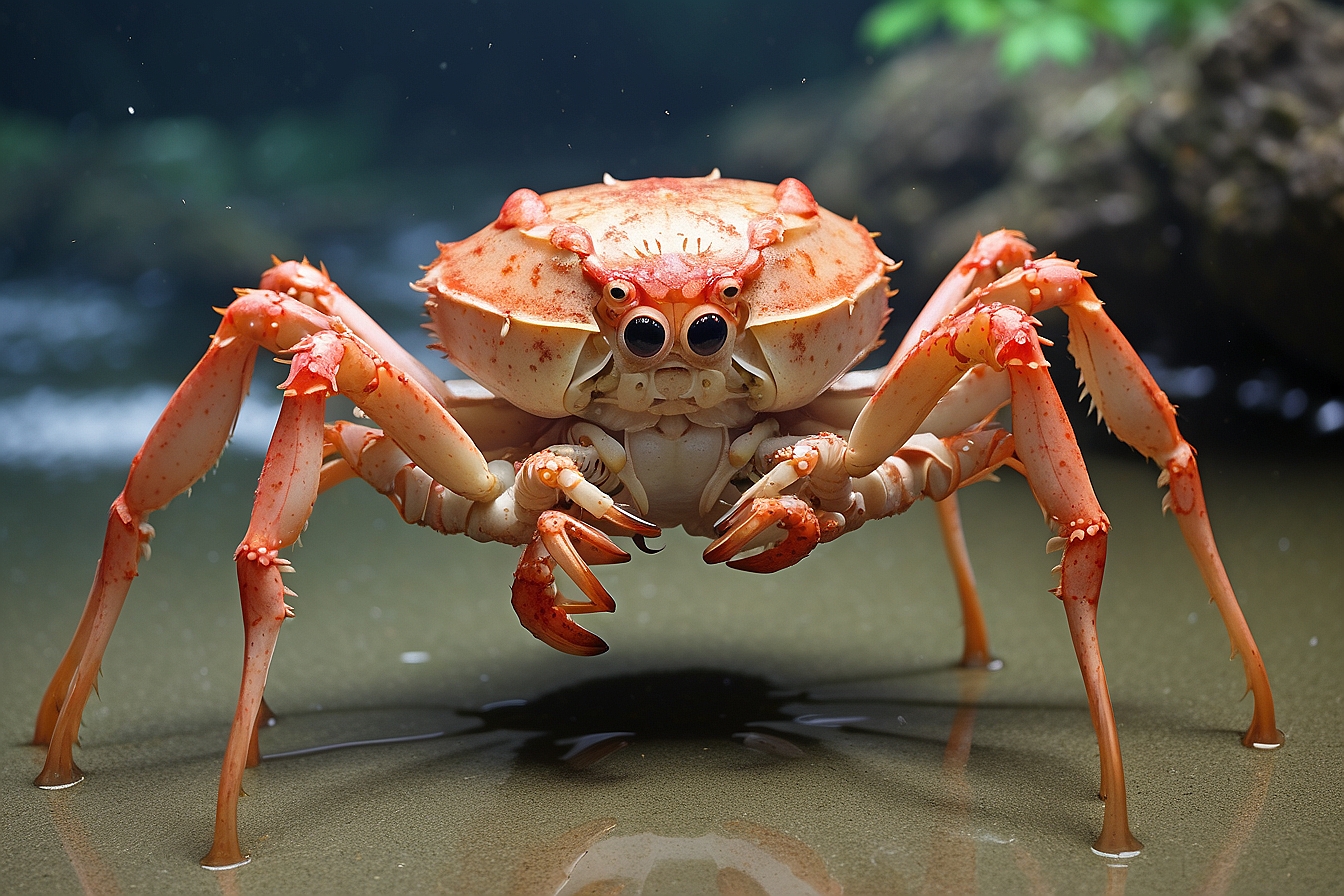
Titan Beetle “Titanus giganteus”
The titan beetle is the only member of its genus “Titanus” and is also one of the largest insect species in the world. It is the largest beetle in the Amazon rain forest also known as Titanus giganteus. If we talk about the largest beetle in the world, the Titan beetle is considered one of two candidates in the world with the other being the Hercules beetle.
These beetles are native to South America, they can be found in Brazil, Peru-Bolivia, Ecuador, Colombia, and the Guianas. They can reach a length of up to 18cm long and weigh up to 100 grams. Both males and females are similar in size. Most of the beetles’ bodies are black (thorax, head, mandible, antennae), except across the abdomen this species has chestnut colouration. They have three legs on either side.
Facts about Titan Beetle
- Titan Beetles require old-growth trees to feed on so they are threatened by habitat loss.
- Titan Beetles have a strong mandible at the front of their head which can be used to break up wood. This powerful mandible may snap a pencil in half.
- Titan Beetles have two antennas, which are protruded from their heads.
- Titan Beetles have sharp spines, which help to scare off predators that may seek to attack them.
- Titan Beetles only feed on decaying wood. They are refused to eat the fruit and sugar water made available to them.
- Most Titan Beetle males have attracted to lights at night, so they are easily caught, however, the females are rarely attracted to lights.
- The Titan Beetles can fly but flight requires high energy and as such is rarely undertaken, males may fly in search of a female to mate.
- Adult Titan beetles are primarily nocturnal which means that they are active at the night.
- The Titan Beetles expel air through the breathing holes which are located on the side of the body to hiss as a warning to their predator. Although they will hiss if they feel any predators, they’re not aggressive.
- Titan beetles refused to eat the fruit and sugar-water made, which are available to them.
- People are sometimes mistaken for a form of a Titan beetle with a cockroach.
- During hot and humid weather, Titan beetles fly around looking for mates by following the scent of pheromones. Pheromones are airborne chemical attractants that are produced for mating purposes.
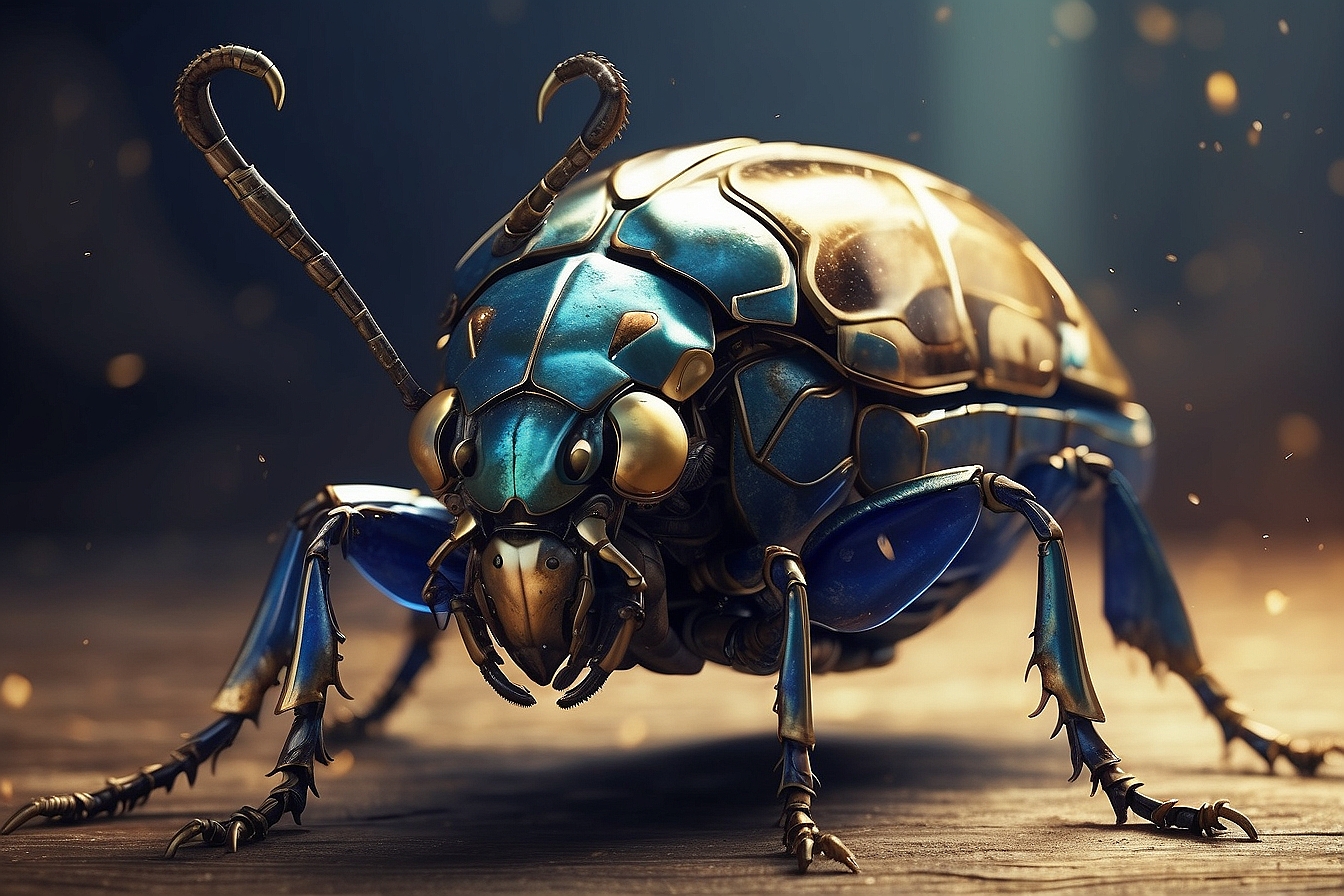
Giraffe “Giraffa camelopardalis”
Giraffes are considered the biggest land animal by height, they reach up to 6 meters tall. They are also the largest ruminant on Earth. These kinds of mammals belong to the genus Giraffa. They are found in the dry savannas of Africa in open plains and woodlands. They also are known as Giraffa camelopardalis.
Giraffes are herbivores, which means that they mainly eat plants. They have a huge appetite, they spend most of their time eating and guzzle up to 45 kg of leaves and twigs every day. They have distinctive spotted pattern and their skin can range from light tan to nearly black depending on where it lives and what the giraffe eats. Giraffe’s shape appearance is between both a leopard and a camel.
Facts about Giraffes
- Giraffes’ tongues are a half meter long that help them pull down leaves growing way up high.
- Giraffes’ necks alone can reach near two 2 meters long.
- Giraffe females
- Female giraffes become pregnant at 5 years old. They have a 15-month gestation period, and their babies are born approximately about 2 meters tall.
- Giraffes love eating leaves, fruits, and flowers of woody plants. They only need to drink once every few days because they get most of their water from their leafy meals.
- Giraffes can run as fast as 35 miles an hour over short distances, and can also cruise at 10 mph over longer distances.
- Although giraffes are very tall, they can’t see in all directions to spot predators.
- These social animals are live in groups, which called towers. These groups are consists of about 15 members led by an adult male and some females and young males.
- Male giraffes fight by butting their long necks and heads, which is called necking. These kinds of fights aren’t always dangerous.
- Female giraffes give birth while they stand up. Giraffe babies are quick to get on their feet and after thirty minutes they can stand, and in only a few hours they can run with their mothers.
- Giraffes may live 25 years in the wild and may live longer to reach 40 years old in captivity.
- Giraffes have skin-covered knobs called “Ossicones” that are located on the top of their heads. These knobs helped to protect the giraffes’ heads when they fight.
- Giraffes sleep less than two hours a day, they may sleep standing up for short time or sleep with their feet tucked under them and their head resting on their hindquarters.
- Giraffes face many threats that may lead to the loss of their numbers, including the hunt for their meat, tails, and hides. Also, their habitat may face threats due to logging for firewood.

Wandering Albatross “Diomedea exulans”
Wandering Albatross is considered the largest wing-spanned bird in the world, with a wingspan of up to 3.7 meters wide. They also are the largest seabird of the family Diomedeidae. It is also known as the snowy albatross or white-winged albatross. Its scientific name is Diomedea exulans. They are found in the Southern Ocean, around sub-antarctic, Antarctic, and subtropical waters.
The Wandering Albatross body’s colour is all-white, with a pale pinkish-yellow spot on the side of its head, plus greyish-black wings, and pink feet. An adult albatross’s body length is about 3.7 to 4.6 feet with an average weight of around 15 to 26 pounds. They are carnivores, they primarily feed on small fish, jellyfish, cephalopods, seal carrions, and crustaceans.
Facts about Wandering Albatross
- The Wandering Albatross’ massive wingspan allows them to fly for long distances without any need to flap their wings. They can fly at a speed of up to 23 mph.
- The Wandering Albatross land only to breed and feed.
- The Wandering Albatrosses are monogamous and usually mate for life. They breed once every two years.
- The Wandering Albatross feed at night on small fish, cephalopods, squids, and crustaceans.
- The Wandering Albatross may live for over 50 years.
- When the Wandering Albatross is looking for a mate, they spread their wings and wave their heads.
- The Wandering Albatross make many kinds of noises, such as screams, whistles, and grunts.
- The Wandering Albatross reach the maturity age of 11 to 15 years.
- The females only lay one egg between mid-December and early January, this egg hatches within 11 weeks. The size of an egg is “10 centimetres”. Their baby is called a chick. Newborn takes about 8 to 9 months for a chick to fledge.
- They spend most of their life travelling through the air, they only land on the ground for mating and eating.
- These species are usually seen solitary but they can be seen in groups during the breeding season.
- They belong to the class of Aves in the animal kingdom.
- They have a wonderful wing which has a shoulder lock feature so that a sheet of tendon keeps the wing locked when it is fully extended. This plays an important role in preventing them from having to flap to remain airborne.
- The Wandering Albatrosses population slowly increase because they have a slow breeding rate.
- They are cute birds, and they haven’t been aggressive.
- The Wandering albatross’s stomach is more than 30% of its body mass, it can digest up to 3.2 kg of prey, with a volume of 3-4 litres. Their acidic stomach makes the food they eat break down quickly.
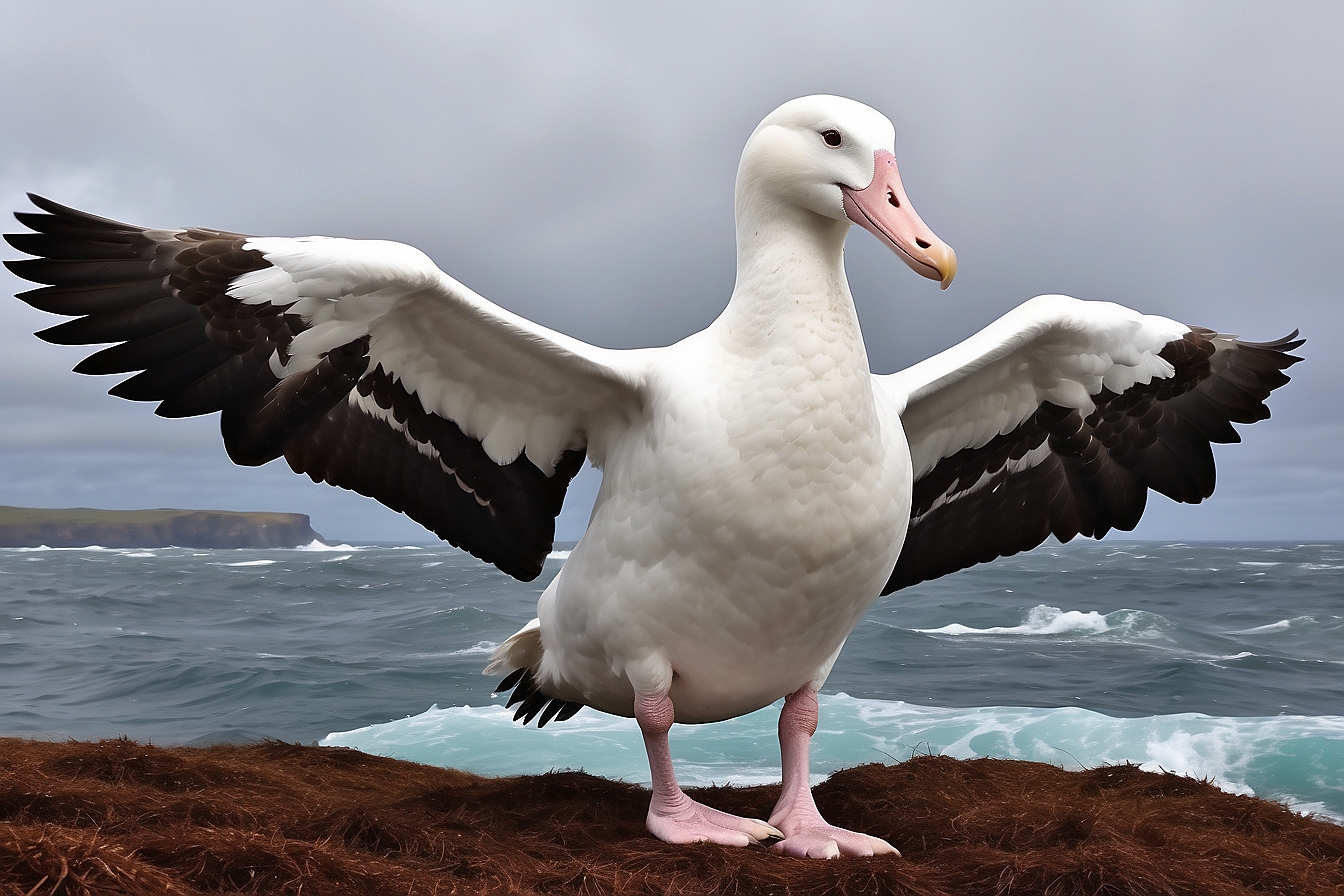
Sperm Whale “Physeter macrocephalus”
The Sperm whale is considered the largest toothed mammal on Earth. They are part of the “Odontoceti” which means toothed whales. The Sperm whale is also known as Physeter macrocephalus, that’s a Greek word means that means blowhole. This kind of whale is found in all of the world’s oceans, from the equator to the edge of the pack ice in the Arctic and Antarctic. It prefers deep water.
The males are larger than the females like other odontocetes whales. Males can measure in at 20 meters and weigh up to 112,000 pounds. On other hand, females are much smaller, measuring 13 meters and weighing 35,000 pounds.
The Sperm whale is dark-grey to black with white patches mostly on the belly, and a large, square-shaped head. It has a small lower jaw at the top part of the head that has about 36-50 conical teeth, while there is no growth of upper teeth. It has many rounded bumps on its back and paddle-like flippers. It has no dorsal fin, it may look like the Beluga whale and Narwhal.
It is achieved its name because of its large head, which inside its head a spermaceti organ filled with spermaceti oil, that oil solidifies as the water gets colder. On account of this, the sperm whale can dive deeper than any other whale.
They are the largest carnivore in the world, they feed on large and medium-sized squid, rays, crustaceans, skate, and octopus. They are greyish-blue or brown with white patches mostly on the belly. They can live 70 years old and may longer.
Facts about Sperm Whale
- The Sperm whale has a wonderful head that weighs it down and gives it the power to swim against the pressures of the deep ocean.
- The Sperm whale can hold its breath for 90 minutes.
- The Sperm whale can dive over a kilometre to hunt and eat.
- The Sperm whale is recognized easily by their huge heads and prominent rounded foreheads.
- The Sperm whale can eat thousands of pounds of fish and squid per day.
- The Sperm whales are spotted in pods (groups) of 15 to 20 whales. These pods include females and their young, while males may move solo or move from one group to other.
- Sperm whale females remain in tropical or subtropical waters all year long, while males migrate.
- These kinds of whales are vocal and emit a series of “clangs” that may be used for communication. They generate the world’s loudest animal sounds.
- The sperm whale’s head accounts for around 1/3 of its total length.
- The sperm whales have been known to sleep for short times.
- Baby Sperm Whale is called a calf, it is over 13 feet long at birth.
- The Sperm Whale’s brain is the largest in the world, weighing on average 7 kilograms. It is 5 times heavier than that of humans.
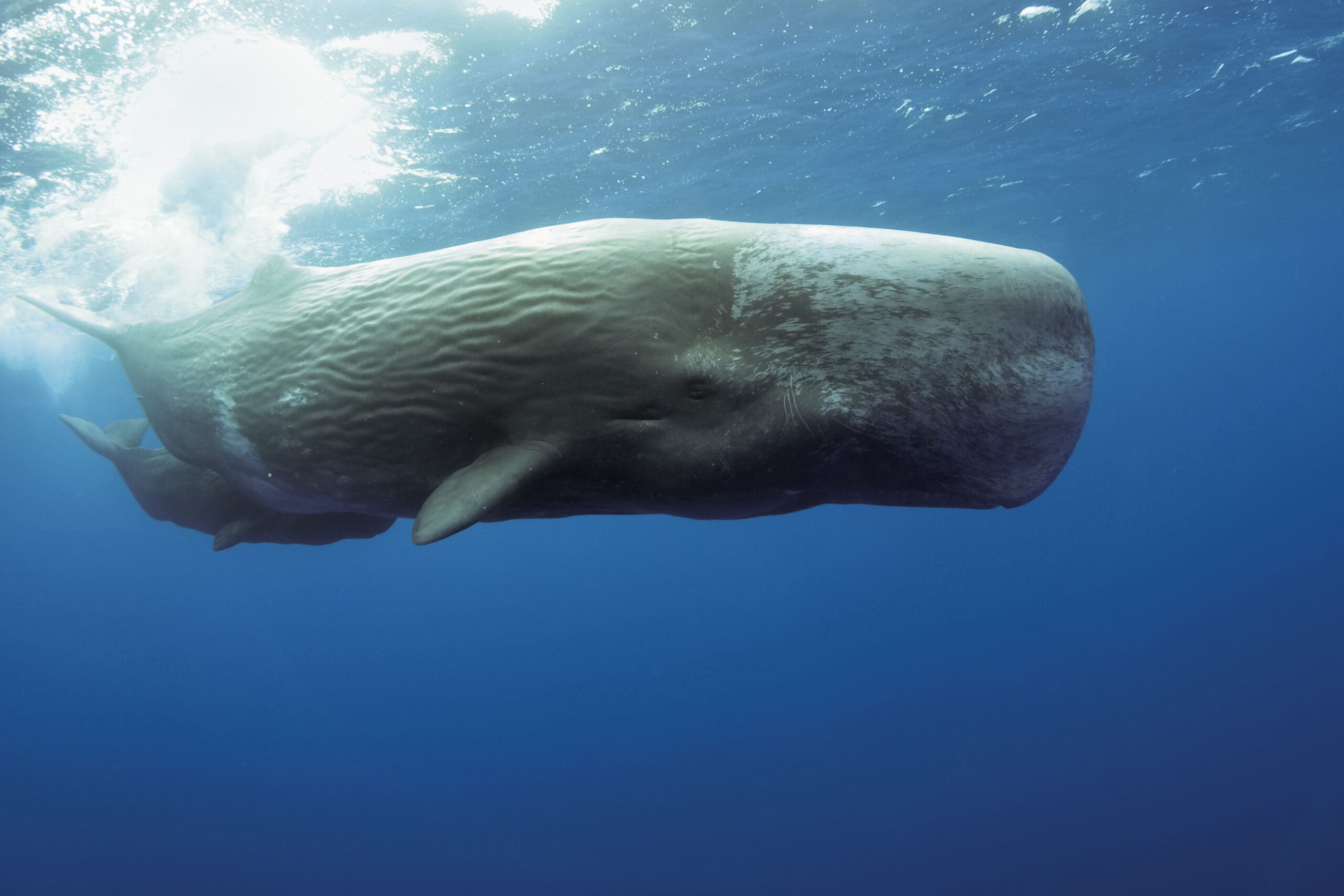
Polar Bear “Ursus maritimus”
The polar bear is considered one of the largest mammals in the world, it is also known as “Ursus maritimus” which means in Latin sea bear. It’s too hard to compare the world’s biggest carnivore between the Kodiac bear and the polar bear. And it’s very hard to pick the winner as size-wise they’re so similar!!! But the polar bear is the winner in the end.
A polar bear is a member of the Ursus genus, which is found in Canada, Russia, Alaska, Greenland, and some Northern islands in Norway. The adult polar bear male weighs around 900 to 1,600 pounds and stands around 3 meters tall. It spends most of its life on sea ice in the freezing arctic waters. Polar bears can live from 25 to 30 years.
Polar bears are carnivores, they primarily eat seals. They hunt by swimming beneath the ice, but the cold climate makes it harder for polar bears to hunt, so they must scavenge for other food that is less nutritious. They have a white, hollow fur coat, which keeps them warm in cold weather. They have a blue tongue!!!
Facts about Polar Bear
- Polar bears love hunting seals on the ice.
- The polar bear is one of the most endangered animals on earth because of habitat erosion.
- Polar bears are good swimmers, they may swim hundreds of miles from land.
- Polar bears use their large front paws to paddle.
- The young polar bear is called a cub, while the female is called a sow.
- Pregnant polar bear in fall makes a den on earth and snowbanks for their babies. It gives birth to one to three cubs. In spring, the mother protects its cubs during emerging from her den and teaches them how to hunt.
- The polar bear is the most carnivorous member of the Ursus genus.
- Polar bears are considered marine mammals due to spending most of their life in the water.
- Polar bears’ diet mainly consists of ringed seals and bearded seals.
- Polar bears can live up to 25 years and may more than that to 43 years of age in captivity.
- Adult polar bears have 42 sharp teeth.
- Polar bears are good at swimming, they can swim up to six miles per hour.
- Polar bears have good smell sense, they can smell their prey up to one mile away.
- Polar bears are currently identified as vulnerable, they may extinct in the wild.
- Polar bears’ white fur acts as camouflage in the snow that is good for hunting.
- Polar bears have paws that provide them with a good grip on the snow and their black skin protects them and soaks up the sunshine that keeps them warm.
- Polar bears’ bodies have managed to adapt in many ways to be able to survive in cold conditions.
- They also have oily fur that is great for keeping the heat in and moisture out.
- They have large feet, which keep their balance, distribute their weight and increase their grip on the ice.
- Global warming is considered the biggest factor that threatens polar bears to become extinct due to the melting and shrinking of ice.
- About only 900 polar bears are remaining in the wild.

Killer Whale “Orcinus orca”
Killer Whale is considered the largest animal in the Delphinidae family of oceanic dolphins. Killer whales are found in all of the world’s oceans, especially in the Arctic and Antarctic and in areas of cold-water upwelling.
They are distinguished by their black-and-white colouration with a white eyespot located just above and roughly behind each eye. It also has a bright white lower jaw, streamlined body, large dorsal fin and a sleek.
They are also known as Orcinus orca. They are carnivorous predators, They mainly feed on marine mammals such as seals, sea lions, and even whales. They also eat seabirds and squid. They may reach 8 meters long and weigh about 5,400 kg. They can live between 50 and 60 years in the wild, females have been known to live more than that.
Facts about Killer Whale
- Killer Whale can eat up to 230 kg of food a day.
- Killer whales have no predators, and they hunt anything from fish to adult whales.
- They are considered the largest carnivores in the world.
- A group of killer whales is called a pod, a male killer whale is called a bull, a female killer whale is called a cow, and a young killer whale is called a calf.
- Their pods may have up to 40 individuals.
- They may know as “the wolves of the sea”.
- Females reach reproductive maturity at about 14 to 15 years.
- The gestation period of females is about 17 months, they may give birth to calves every three to ten years.
- Killer whale calf weighs as much as 350 pounds.
- A killer whale is a toothed whale.
- Killer whales’ distinctive patterns are a form of camouflage that helps them to hide their presence when in search of food.
- They have sharp teeth that can be ten centimetres long.
- An adult killer whale may eat 100-300 pounds of food a day.
- Killer whale uses sophisticated biological sonar called echolocation, which helps them to locate and discriminate objects underwater.
- Killer whales have a tail or flukes used for swimming, which makes them move in an up-and-down motion to accelerate.
- The killer whale’s dorsal fin keeps it from rolling side to side while swimming. They also have pectoral flippers that are located behind the head. These flippers are used for steering, stopping, and turning.
- Like humans, killer whales breathe through their lungs so they need oxygen. But they didn’t use their nose for breathing like humans, they use their nostrils, which are called blowholes that are located on top of their heads.
- They are warm-blooded like other mammals.
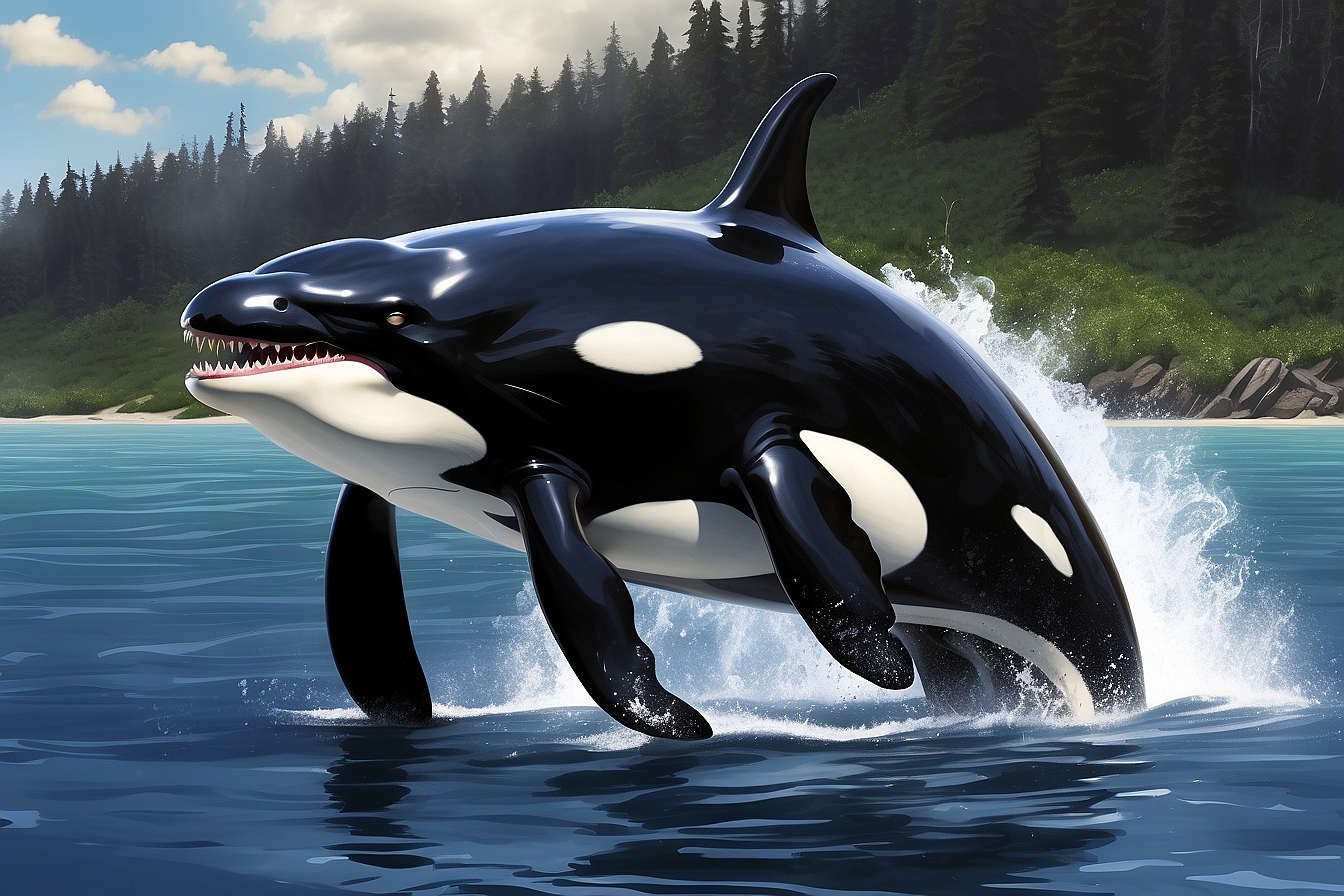
If you enjoyed learning about this fascinating animal why not check out more fantastic facts about other animals: Koalas, Ostriches, Land Animals, Sharks, Raccoons, Moon and Sun Bears, Rats, Sheep, Chickens, Cats, Pandas, Monkeys and Whales.
Why not subscribe for as little as £1.99 per month to access over 1000 fun educational videos!


Leave a Reply